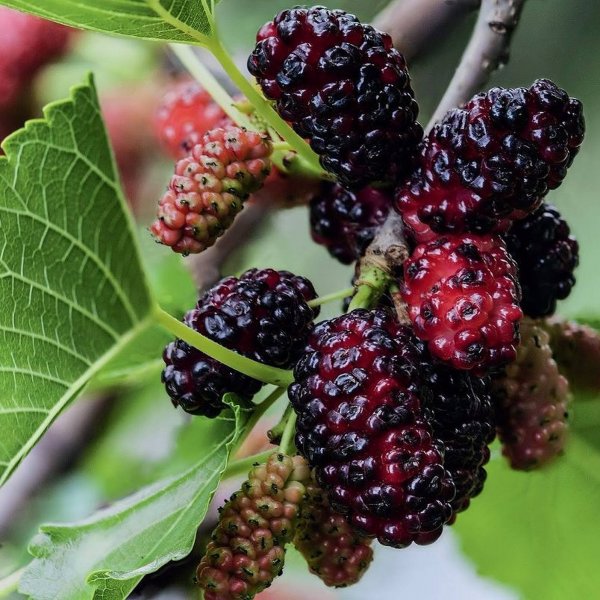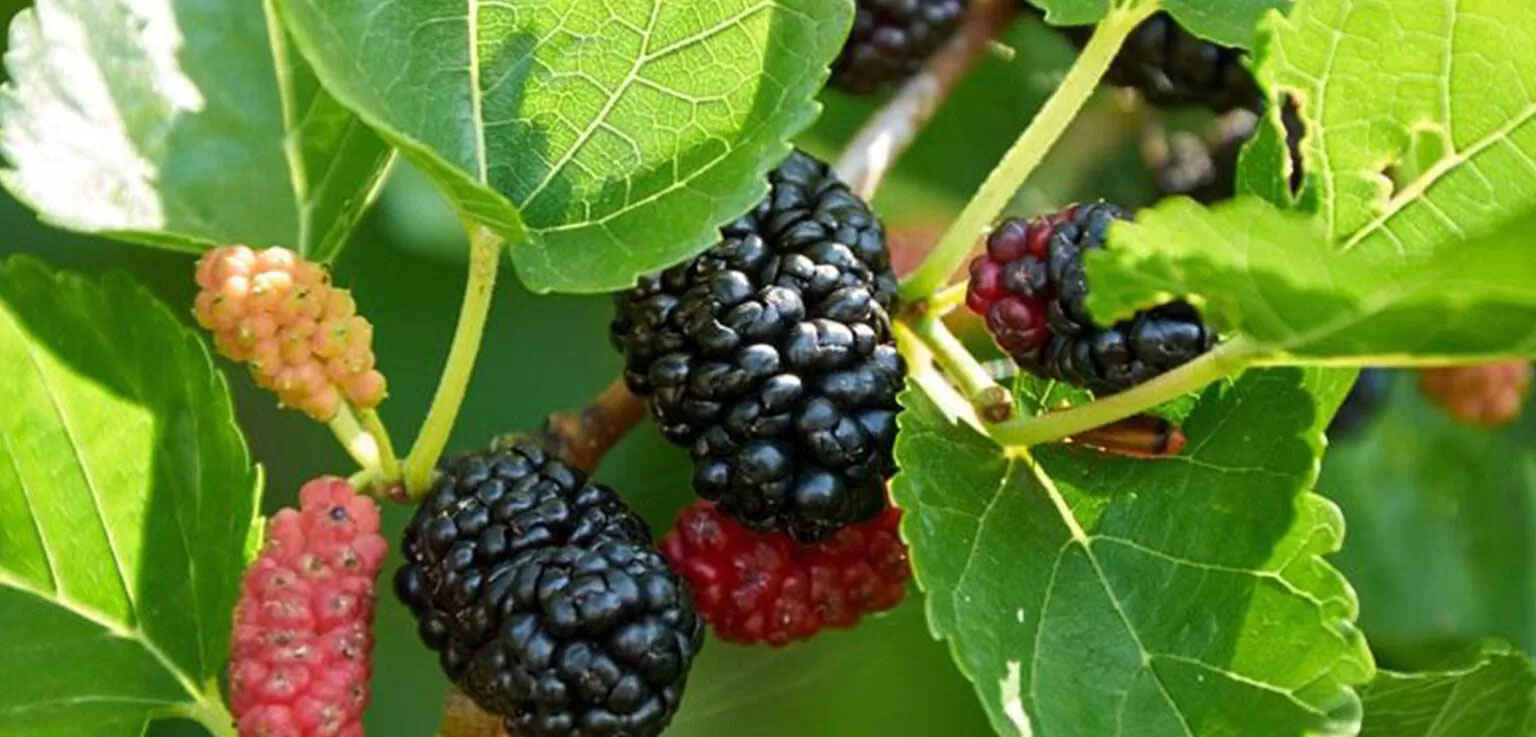Morus Nigra is a species of flowering plant in the family Moraceae that is native to southwestern Asia. The black mulberry is known for its large number of chromosomes. it was much used in folk medicine, especially in the treatment of ringworm.
A Richly Flavoured Delight; The Black Mulberry, scientifically known as Morus nigra, is a deciduous tree that graces landscapes with its impressive stature, reaching up to 12 meters in height and 15 meters in breadth. The leaves, measuring 10–20 centimeters in length and 6–10 centimeters in breadth, add to the tree’s beauty with their downy undersides and rough upper surfaces adorned with short, stiff hairs. Notably, each cell boasts a total of 308 chromosomes, reflecting tetratetracontaploidy (44x), showcasing its unique genetic composition.
The fruit of the Black Mulberry is a compound cluster of small, dark purple drupes, nearly black when ripe, with a diameter of 2.5 centimeters. Renowned for its rich flavor, reminiscent of the red mulberry, this species stands out among its counterparts. Anthocyanins contribute to the distinct coloration of the mulberry fruit.
Cultivation and Geographic Spread
Believed to originate from mountainous regions of Mesopotamia and Persia, Black Mulberries have made their way west across Europe and east into China. Thriving in areas including Armenia, Afghanistan, Iraq, Iran, India, Pakistan, Syria, Lebanon, Jordan, Palestine, Israel, and Turkey, these trees have become a significant part of various cultures.
The fruit is not only edible but has been cultivated extensively for its delectable properties. In regions like Persia, it is known as “toot” or “shahtoot” (king’s mulberry), and in Arabic, it is referred to as “shajarat tukki.” Locally concentrated in Pukanec, Slovakia, where 470 black mulberry trees adorn vineyards, Europe has witnessed the successful integration of this species into its landscape.
Historical Impact and Legacy
In the 17th century, efforts were made to import Black Mulberries into Britain with the hope of supporting silkworm cultivation (Bombyx mori). While unsuccessful in that particular endeavor due to silkworms’ preference for white mulberries, the trees left a lasting legacy in the country’s gardens. Widely used in folk medicine, especially for treating ringworm, Black Mulberry holds cultural significance and continues to enchant with its unique characteristics.




